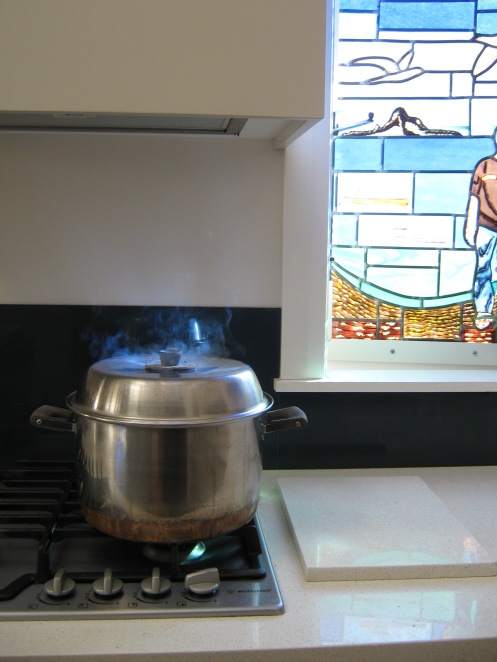clothes drying, condensation, cooking, DVS, HRV, unflued gas heaters, windows
Reducing Condensation(3)-Kitchens and living areas
Small actions can make quite a difference to how dry your home is:
- put lids on pots, especially if cooking for a long time, simmer rather than boil hard
- use the kitchen extractor fan if you have one, or else open a nearby window -just a crack is usually sufficient. Make sure the draft from the window doesn’t cause other issues, such as the flame on a gas cook-top going out, or things getting blown towards the cook-top.
- Dry clothes outside if you can – a full load of washing can hold up to 5 litres of water. If you can’t use the clothes line, sometimes the garage or a covered porch works well.
- If you have a drier, make sure it is vented to the outside. If nothing else, you can buy a flexible length of hose to hang out the laundry window while the drier is going.
- If you do need to dry clothes inside, leave a few windows open just a small amount in different parts of the house (security stays may help with safety concerns). This encourages a steady cross-draft which will help your home stay dry and avoid that musty smell
- Unflued gas heaters (the cabinet sort with the gas bottle) cause a LOT of moisture in your home. If you are using one of these heaters, consider whether you can swap to an oil column heater or have a heat pump, a wood burner or flued gas fire installed. If this is simply not possible, you will need to ventilate your house well. Have one or two windows open just a crack while using the heater, and ventilate the house during the day.
Although it seems a paradox, ventilating your house actually means it is easier to heat. The drop in temperature from having a little bit of cold air is more than compensated by the drying effect. Drier air is easier to heat, and in addition your furniture, curtains and surfaces won’t get as much mildew and mould.
If you don’t believe me, try it. You will need to experiment for yourself as every house is different. Comments and feedback welcomed.
PS. If you have a persistent problem with condensation, especially in the spring months, you may have damp ground under your house (this can be the case even if it doesn’t feel particularly damp to the touch)-see my post on polythene moisture barriers for a really good fix for this.
Next up on this topic will be a post on DVS and HRV systems- when to consider them.
From → Healthy Housing


Best thing I ever did to my house over successive years was to first put the plastic liner on the dirt under the house (cheap and effective), then put under-floor insulation in. While this warmed my house, it made the condensation worse, so the following year I had a HRV ventilation system put in. No more condensation! At the time I had a 24 month interest free period to pay off the ventilation system, so everything was affordable. I now live in a much more comfortable house for minimal cost over three years.
Good to hear of your experience Gary, its not uncommon to experience more condensation after floor insulation is put in, as drafts are reduced (ie reduced ventilation). Sometimes just upping the ventilation by opening windows more works, and sometimes DVS or HRV is required (as in your case). Cheers and thanks for posting.